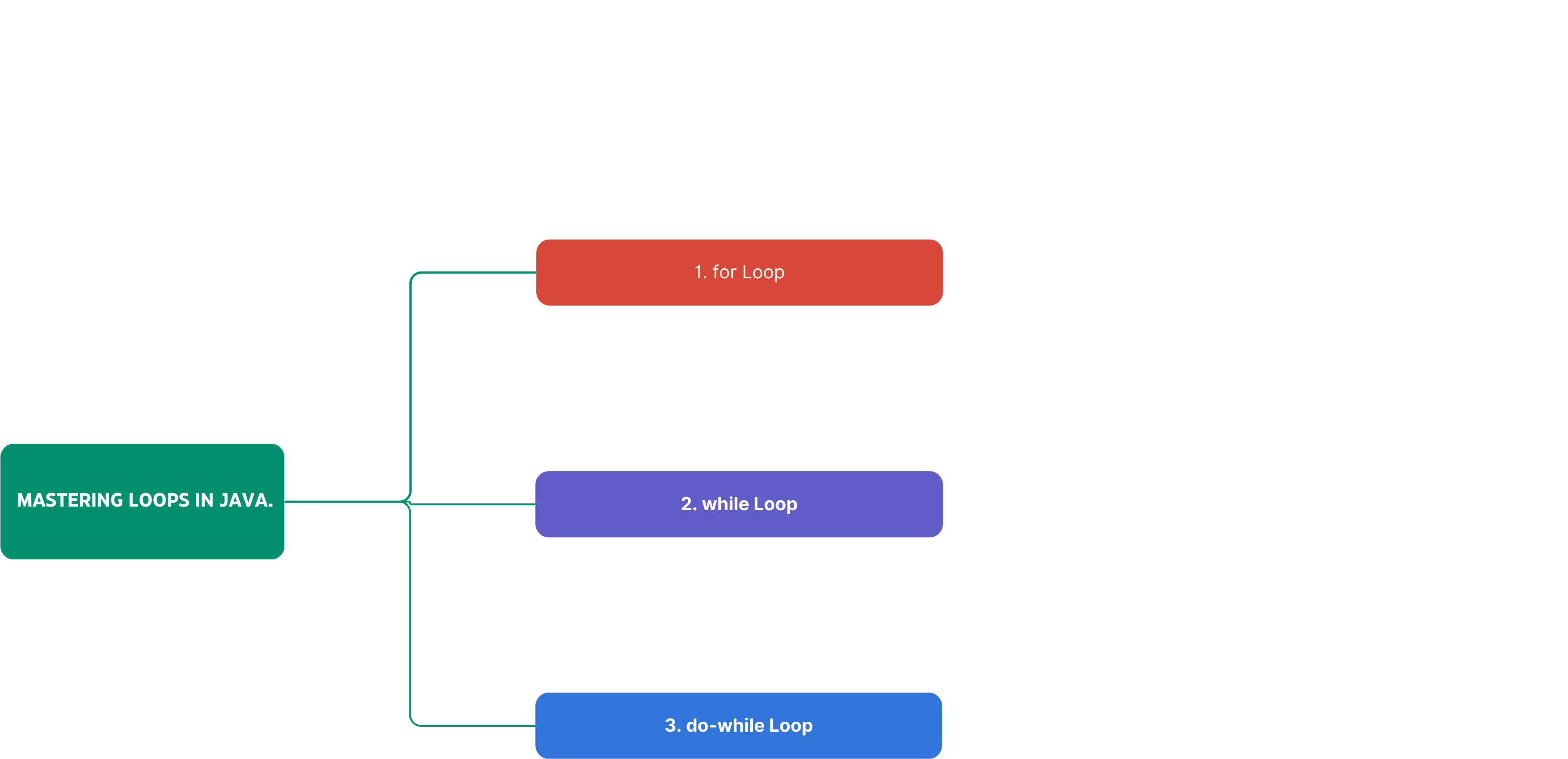Introduction
Loops in java are an integral part of any programming language, and Java is no exception. They allow you to execute a block of code repeatedly, making your programs more efficient and versatile. In this comprehensive guide, we’ll delve deep into the world of loops in Java, exploring the different types of loops and their practical applications. By the end of this post, you’ll have a solid grasp of how to use loops effectively in your Java programs.
Table of Loops in java
What Are Loops in java?
Loops in Java are control structures that allow you to execute a specific block of code repeatedly as long as a certain condition is met. They help in automating repetitive tasks and are essential for tasks like iterating over arrays, processing collections, and performing various calculations.
Java offers several types of loops in java, each with its unique characteristics and use cases. Let’s start by discussing the most commonly used ones.
1. for Loops in java
The for loop is used when you know beforehand how many times you want to execute a block of code. It consists of three parts:
for (initialization; condition; update) {
// Code to be executed repeatedly
}Initialization:
This part is executed only once at the beginning and is used to initialize a loop control variable.
Condition:
It is a boolean expression that determines whether or not the loop ought to hold executing or not. If the situation is true, the loop continues; otherwise, it exits.
Update:
This part is executed after each iteration and is usually used to update the loop control variable.
Example:
for (int i = 0; i < 5; i++) {
System.out.println("Iteration " + i);
}
2. while Loops in java
The while loop is used when you don’t know in advance how many times you want to execute a block of code but have a condition that should be true for the loop to continue. It has the following structure:
while (condition) {
// Code to be executed repeatedly
}
The loop runs as long as the condition is true.
Example:
int count = 0;
while (count < 5) {
System.out.println("Count: " + count);
count++;
}3. do-while Loops in java
The do-while loop is similar to the while loop, but it guarantees that the code block is executed at least once, even if the condition is initially false. Its structure is as follows:
do {
// Code to be executed repeatedly
} while (condition);
Example:
int number = 5;
do {
System.out.println("Number: " + number);
number--;
} while (number > 0);
Practical Examples
Now that we’ve covered the basics, let’s explore some practical examples of how to use loops in Java.
Example 1: Sum of Numbers
Suppose you need to calculate the sum of all numbers from 1 to 100. You can use a for loop for this task:
int sum = 0;
for (int i = 1; i <= 100; i++) {
sum += i;
}
System.out.println("Sum of numbers from 1 to 100: " + sum);
Example 2: Finding Prime Numbers
To find prime numbers between 1 and 100, you can use a nested for loop along with a boolean flag:
for (int i = 2; i <= 100; i++) {
boolean isPrime = true;
for (int j = 2; j < i; j++) {
if (i % j == 0) {
isPrime = false;
break;
}
}
if (isPrime) {
System.out.print(i + " ");
}
}
Example 3: Iterating Over an Array
Loops are commonly used to iterate over arrays and perform operations on their elements:
int[] numbers = {1, 2, 3, 4, 5};
for (int num : numbers) {
System.out.println("Number: " + num);
}Loops in java Control Statements
In addition to the basic loop structures, Java provides loop control statements to modify the flow of loops:
1. break Statement
The Break statement terminates the loop early. It is often used when a certain condition is met and you want to exit the loop immediately.
for (int i = 0; i < 10; i++) {
if (i == 5) {
break;
}
System.out.println("Value of i: " + i);
}
2. continue Statement
The preserve announcement is used to pass the contemporary new release of a loop and continue to the subsequent new release. It is often used when a certain condition is met, and you want to skip some iterations.
for (int i = 0; i < 10; i++) {
if (i % 2 == 0) {
continue;
}
System.out.println("Odd number: " + i);
}
Conclusion
Loops are a fundamental concept in Java programming, allowing you to repeat a block of code efficiently. By mastering the various types of loops and loop control statements, you can write more powerful and versatile Java programs. Remember that choosing the right loop type for a specific task is crucial for writing clean and efficient code. Practice and experimentation will help you become proficient in using loops effectively in your Java projects.



